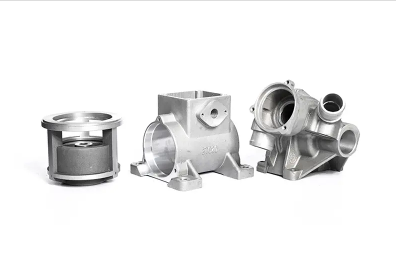Mobile:+86-311-808-126-83
Email:info@ydcastings.com
Innovative Techniques in Sand Casting for Enhanced Metal Fabrication Efficiency
The Art and Science of Sand Casting
Sand casting, one of the oldest and most versatile metal casting processes, has been central to the manufacturing of metal parts for centuries. This technique harnesses the power of sand, a readily available material, to produce intricate and durable metal components. In this article, we explore the principles of sand casting, its advantages and shortcomings, and its applications in various industries.
Overview of Sand Casting
At its core, sand casting involves creating a mold from sand, into which molten metal is poured to create a solidified part. The process begins with the formation of a pattern, which is an exact replica of the final product. This pattern is typically made of metal, plastic, or wood and is used to shape the sand.
To create the mold, a mixture of sand and a bonding agent, usually clay, is packed around the pattern in two halves. Once the pattern is removed, a hollow cavity is left behind, ready to receive hot, liquid metal. After pouring the metal into the mold, it is allowed to cool and solidify. Finally, the sand mold is broken away to reveal the finished component.
Advantages of Sand Casting
One of the primary benefits of sand casting is its flexibility. The process can accommodate a wide array of metals, including aluminum, iron, bronze, and magnesium. Furthermore, sand casting can produce large or small parts with complex geometries, making it ideal for a diverse range of applications.
Another significant advantage is the cost-effectiveness of sand casting, especially for low to medium production runs. The use of sand, which is inexpensive and easily accessible, reduces material costs. Moreover, the molds can be reused multiple times, leading to lower operational costs compared to other casting techniques.
The sand casting process is also relatively less labor-intensive. Once the initial setup is completed, the pouring and cooling stages require minimal supervision. The simplicity of the process allows for quick adjustments to be made in cases of design changes or production requirements.
sand casting

Limitations of Sand Casting
However, sand casting is not without its disadvantages. The surface finish of sand-cast parts is generally rougher compared to parts made from other casting processes, such as investment casting. This often necessitates additional machining for applications requiring precision fitting or a smoother surface.
Another limitation lies in the dimensional accuracy of sand casting. While it can produce complex shapes, the process may not achieve the tight tolerances often found in other manufacturing methods. As a result, careful consideration must be given to the design of the part to account for these variances.
Additionally, the sand casting process can be labor-intensive when it comes to the creation of the mold. The need for skilled labor to pack the sand adequately and the possibility of defects during the pouring process can increase production time.
Applications of Sand Casting
Despite its limitations, sand casting is widely used across various industries. It is prevalent in the automotive sector for manufacturing engine blocks, transmission cases, and custom parts. The aerospace industry also utilizes sand casting for producing complex components, offering significant weight savings.
Sand casting finds its place in the art and sculpture world as well. Artists and craftsmen often use resin-bonded sand for creating intricate sculptures and decorative elements. The versatility of the process enables the creation of unique and imaginative designs that can withstand the test of time.
Conclusion
Sand casting is a remarkable blend of art and science, offering immense versatility and cost-effectiveness for a variety of applications. While it has certain limitations, the benefits often outweigh these drawbacks, particularly for projects requiring intricate designs and lower production volumes. As industries continue to evolve, sand casting remains a cornerstone of manufacturing, adapting to meet the demands of modern technology and design.
-
Understanding Metal Casting TechniquesNewsApr.02,2025
-
Understanding Exhaust Manifolds for Enhanced Engine PerformanceNewsApr.02,2025
-
The World of Metal FabricationNewsApr.02,2025
-
Key Components for Pump and Turbo EfficiencyNewsApr.02,2025
-
Essential Tools for Automotive Maintenance and RepairNewsApr.02,2025
-
Durable Valve Components for Effective Water ManagementNewsApr.02,2025











